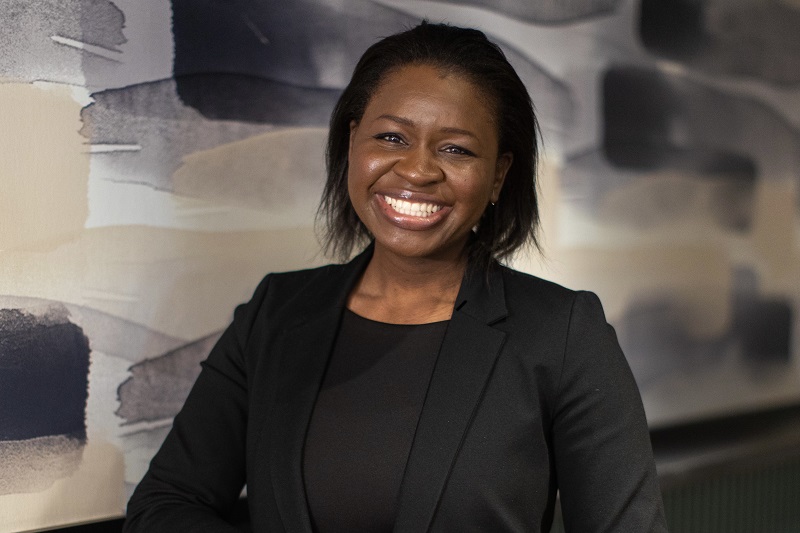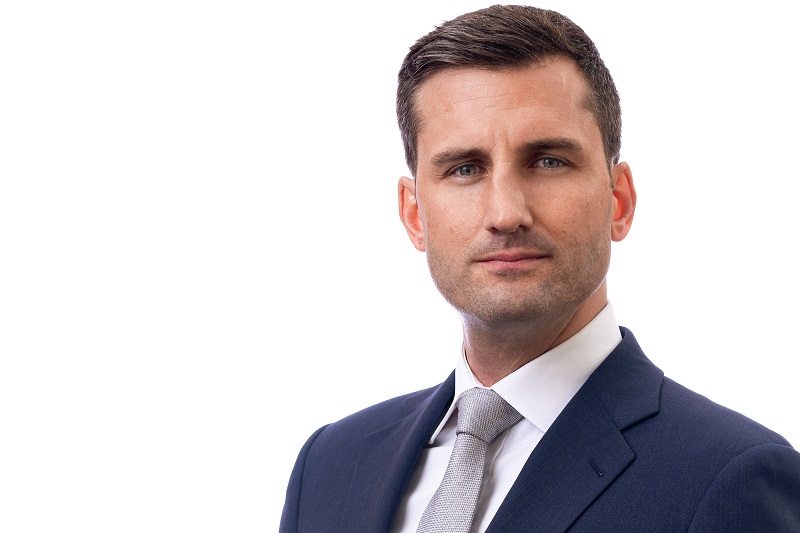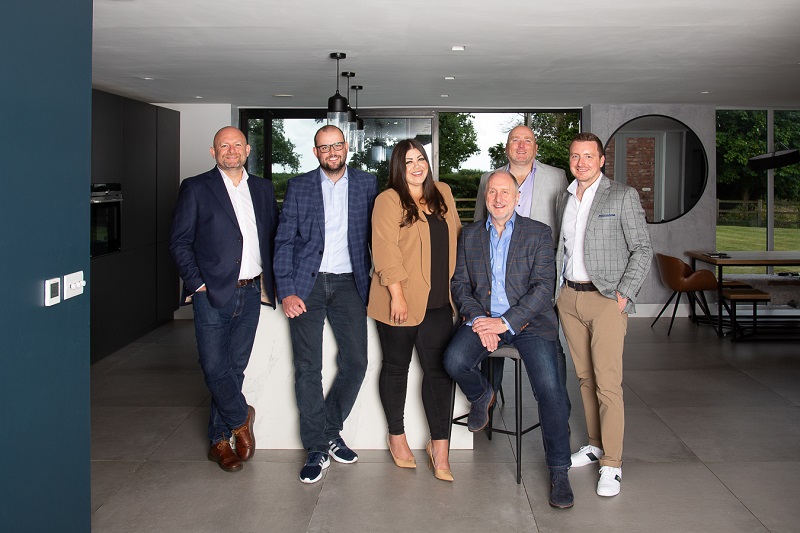In conversation with DiversityQ, Dr. Femi Olu-Lafe, Senior Vice President, Culture and Inclusion for IPG’s Acxiom, Kinesso and Matterkind, breaks down how organisations across any sector can make diversity, equity and inclusion (DE&I) a strategic focus, even if they’re just starting out.
What drew you to the role at Acxiom?
There were primarily two reasons – firstly was the company’s approach to business. Everything Acxiom does is about focusing on meaningful interactions with people and going beyond seeing them just as consumers towards more of a conscious approach to marketing. That resonated with me a lot. The second was Acxiom’s focus on innovation. More specifically, I got a strong sense that this was a business prioritising efforts on diversity and inclusion and working to lead the industry generally in this area. It felt like for me to come in and serve in the role that I now work, I would be well supported and encouraged.
What will be a key priority for you in the coming months regarding Acxiom’s DEI agenda?
Acxiom’s mission in this area is about making sure that everyone across our organisation feels valued, respected, and has an equal opportunity to thrive and do their best work. We’re actively working to build diversity, equity and inclusion into everything we do at a cultural level, which of course, takes time, but that we feel every company has a responsibility to do. A big part of that is accountability, and while there’s obviously a lot of focus placed on how we’re bringing in new talent into the business through our hiring and recruitment approaches, it’s also about how we’re evaluating and assessing where we are currently, against where we want to be.
There’s also work to be done externally, where Acxiom, alongside our partners, can be working to ensure our data and marketing technology products are as closely aligned to the principles of DEI as possible. Given we’re in the business of targeted marketing and advertising, the preferences and differences of unique individuals have always been important to us – it’s about making sure our products are also designed in a way that supports that.
DEI is growing as a strategic focus for many organisations. Where should a company start on this journey?
Many of the considerations involved here apply for any organisational transformation, but ultimately it comes down to being willing to recognise there will be areas that need work and improvement. Firstly, put in work to understand your current position when it comes to DEI. What do your systems to encourage diversity and inclusion look like, and where are the gaps in your current strategy?
Use data, surveys, focus groups, and conversations internally to get an honest sense of where your organisation is currently sitting. It is important to remember that those organisations that have been most successful with DEI recognise that there are no quick fixes and that it is never truly finished.
Then, the action plans can be built out based on these inputs. This needs to be taken seriously from the top, so it’s important that senior leaders are suitably equipped to encourage and lead by example. An organisations’ day-to-day processes and structures may also need updating to make efforts on DEI more feasible – otherwise, the initiative risks becoming just words with little action.
We hear time and time, and again that data is the key to successful DEI implementation. What does that mean in practice?
Without qualitative and quantitative data on hand, it’s challenging to understand where things currently stand and what’s needed to make progress. DEI requires commitment, but while you won’t see change overnight, you do need a way of assessing whether progress is being made in the right way. It’s the data that helps provide that.
Why are some companies still struggling to collect appropriate DEI data?
Some companies are looking for a quick fix and have a knee-jerk reaction to DEI, often in response to external pressures. This comes with its challenges, as it can lead to performative actions and initiatives that, in fact, don’t make a difference.
Some companies are not intentional about examining the data they have on hand, nor do they think about any data they might still need. There are typically a couple of reasons for this. It can be down to impatience to get things moving or being overwhelmed with the amount of data they have regarding support and analysis. If resources are lacking in-house, organisations may benefit from finding an external partner to walk them through. There’s no mandate for organisations to know absolutely everything, but many would benefit from perhaps bringing in outside perspectives and prioritising resources in areas where they lack expertise.
What is the biggest mistake they can make with the data they collect?
One of the major mistakes organisations often make here is in not meaningfully analysing the data they have. One example is looking at data across organisations as a whole and not accounting for trends among different groups (e.g. race/ethnicity, gender identity, age) and intersectionality (e.g. ethnicity by gender identity).
There are also important considerations to be taken into account when it comes to bias. Other common mistakes organisations make are trying to make the data they collect fit a certain story or narrative they want to tell or not being open to the gaps and areas of improvement that data might be revealing. If that’s happening, the whole initiative can end up looking at best disingenuous, and at worst, completely ineffective.
How do you ensure the data captured is used ethically and inclusively?
There are many organisations out there that specialise in gauging internal sentiment and ethically collecting the necessary data, and while at Acxiom, we have in-house resources that can help with this, not everyone is so lucky. In those cases, it can sometimes help to bring specialist external partners in to help make sure there are the right intentions around the use of any data relating to DEI.
What does good DEI look like in marketing?
In our business, we create and apply intelligence to help our clients understand people and enable marketing that matters. Marketing is about connection. As marketers, every decision we make shapes how we see and connect with people. That’s why it’s essential that we make every effort to see people as their full selves.
People see themselves based on many factors. Putting people in boxes is not only limiting and stereotypical; it’s also less effective. People want to engage with media that includes authentic representation of a diverse array of identities. As marketers, this looks like us investing in the celebration of diversity and developing content that better portrays multicultural audiences. Brands must recognise the multi-faceted nature of all people. DEI in marketing requires an examination of all stages of the marketing process—from data collection to media planning to the creative process.
Brands that better understand multicultural audiences and can speak to the nuances in the identities they hold are able to form more impactful and meaningful connections.
We often find there is buy-in from the top and bottom of an organisation but that it’s challenging to engage middle management? Why and what can be done?
Sometimes there isn’t enough of an imperative to take action that filters down from senior leadership. Like everyone else within an organisation, leaders themselves are also on their own DEI journey but have a big role to play in ensuring all levels within the business are also taking this work seriously and understand where the areas for improvement lie.
It’s helpful for leaders to understand their role is always about serving as an enabler, and in this case, it’s to create the conditions for others to enact change and drive the DEI mission of an organisation. They must be willing to hold themselves accountable for pushing this forward, whether that’s setting goals and measuring progress against those or opening themselves up to frank conversations with staff to get a sense of how they’re feeling on these issues.
What trends do you see emerging in the DEI space or areas of focus?
There are a few notable areas here that I’ve seen emerge over the past few years. First has been how much more data-driven initiatives have become. DEI training is also being applied in a more thoughtful and bespoke way in organisations – instead of the one size fits all approach that might have happened in the past.
Other areas that have appeared on the radar much more over the past few years include how DEI has become ingrained in business practices – moving beyond the role it has traditionally played in HR and people functions for a long time, into how an organisations’ products and practices might actually aid or obstruct DEI progress. In that sense, it’s getting into more challenging territory, looking closely at what a business actually stands for and provides.
With the changes and restrictions of the last 18 months, we’ve also, of course, seen more work on how hybrid work patterns might have impacted DEI, both positively and negatively. It’s brought down many of the barriers that existed in the past for some job roles. Still, at the same time, we must not forget the importance of the support networks and team cohesion that can sometimes be overlooked in the effort to make remote working possible. There’s work to be done here to examine how organisations can use hybrid working appropriately to best support DEI efforts rather than obstructing them.
If you had a magic wand, what would you do first to make workplaces more inclusive?
For me, it would be to find a way to teach people how to truly see and listen to others.









